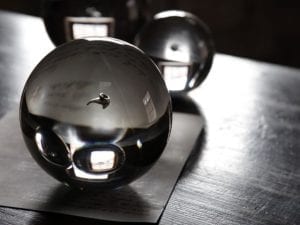Drawing on Snarkitecture’s ethos of looking beyond the expected norm, gathering inspiration from the everyday and reinventing details, their self-titled book, published by Phaidon, tells the story of the design company’s rise within the creative world, presenting more than 70 unique projects with accompanying visuals, diagrams and descriptive captioning. Maria Cristina Didero, an independent design curator and freelance journalist based in Italy, offers an opening introduction, foregrounding how the pair constantly rejects conventionality, coating almost everything in their signature shade of pure, untouched white, exemplifying the realm of “not-art” and “not-architecture”. This notion of the other and the undefinable embodies how, since 2008, the designers have reinvented the possibilities of design, endeavouring for the unknown, the unseen and the unimaginable. Didero reflects this understanding stating the pair recognises that architecture and art as “a human engine driving original experiences that are characterised by both surprise and the singular ability to physicalize things in unforeseen and unpredictable ways.”
Graduating from The Cooper Union for the Advancement of Science and Art, New York, Daniel Arsham and Alex Mustonen, who are joined by Benjamin Porto, have collaborated with a whole range of individuals. From working with world-renowned Dior Designer, Hedi Slimane, to teaming up with modern-dance choreographer Merce Cunningham, Snarkitecture’s portfolio demonstrates an ability to quickly switch between disciplines, grounded in their alternative backgrounds in artistic and architecture trainings. Further clients revealed within the photobook include works for Calvin Klein, the New Museum, New York, and American street-wear retailer, Kith.
Fashion and architecture collide with the multitude of Kith shop layouts, boasting locations in Miami, Tokyo and Brooklyn, which is the home to their flagship store. Studying the images, the ingenuity of Snarkitecture’s unique design process is clear, with the brand honing in on the trainer-trend, capturing the essence of the store whilst stamping their own signature. 650 replica castings of Air Jordan 2 trainers, all in white are seen covering the otherwise unremarkable ceiling of the store. This three-dimensional pattern has been repeated across all of the stores, with a trainer covered, arched wall dominating the Miami store.
The process of repetition is seen throughout the book, showing that although brand specific ideals are important, the trio are highly aware of the needs of their clients, embracing them in a totally abnormal way. Further breaking the mould, the projects in the book are not only shown through large, bright photographs, but are also joined by an assortment of mechanical drawings and floor plans, offering an alternate way of viewing the brand’s works. The publication not only allows readers to gain an insight of dimensions and materials, but once again echoes the varying concerns of the trio, embracing technicality and creativity.
Concluding the focus, Snarkitecture invite readers into their studio, informally discussing the chronology of the brand. The designers reminisce about their origins, signposting the importance of their studio for their external work, and finally looking to the future. Alex ends on the declaration that the brand wish to explore new realms of space and scale, creating a transformative “Snarkitecture world.”
Snarkitecture is published by Phaidon. For more information click here.
Saffron Ward
Credits:
1. The Beach, 2015, polyethylene spheres with antimicrobial coating, scaffolding, drywall, staging, white carpet, glass mirror, furniture, 929m². National Building Museum, Washington DC, USA. Picture credit: photograph © Noah Kalina, courtesy of Snarkitecture (page 040 – 041).





